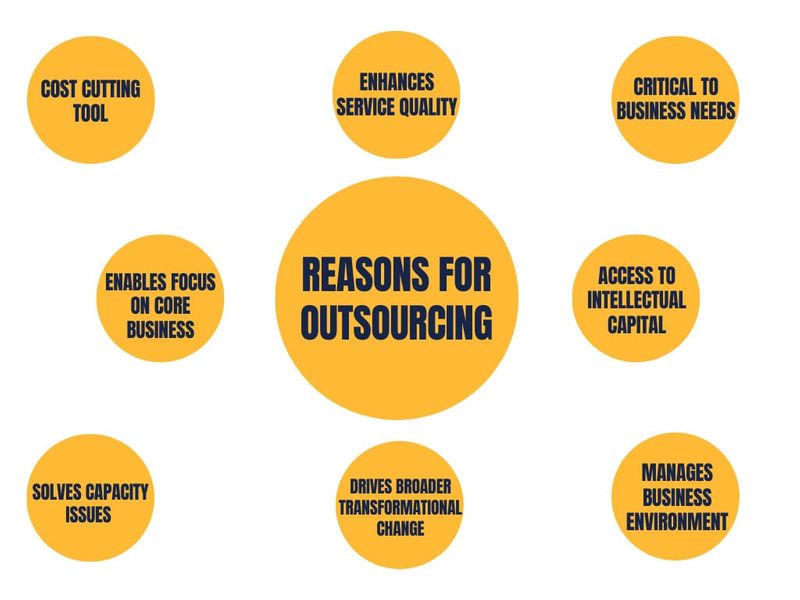How to Control Outsourcing Development Company?
READ WHOLE ARTICLE

In a couple of recent years, outsourcing companies has gained firm positions on the global digital services market. Along with that, IT the niche of IT outsourcing grows with the pace proportional to that of the mass development of IT technologies. Surely, many companies in that field have to adjust to global tendencies and invest into lots of additional software. But that only makes everything move faster in the world of digital services.
Operating this expanding niche involves certain challenges you need to overcome to keep afloat your outsourcing production without losing control. Getting some of those out of the way, however, you are looking at enormous prospects and chunks of highly-profitable market. What in particular should you focus your attention on? This feature will help you figures some of the major ins and outs of how to most efficiently control outsourcing company.
Outsourcing Specifics
Outsourcing is when certain tasks and pieces of project or the whole project to be implemented is passed to a temporarily hired third-party contractor who specializes in its particular specifics. As a whole, going for outsourcing is an efficient part of a well-thought-out business strategy. Thus, companies manage to handle complex pieces of projects without needing in-house employees for that while also keeping some outsourced process control.
There are several significant benefits to this way of completing projects:
- Reduced expenses for certain parts of production;
- End product’s high quality due to overall expert approach;
- Economy on labor taxes;
- Company focus on the crucial business processes;
- Mutually beneficial, tactical cooperation.
The main special feature when it comes to outsourcing is that the hired team of specialists is governed by its corporate management while being fully involved with none other than your project. As such, the professional activity of such a team receives monitoring from both the company they regularly work for and the client company.
All in all, outsourcing is able to save companies from unsuccessfully launched projects and avoid many flaws that may not seem obvious in your production. You just need to focus on some major and points and don’t fall for amateur mistakes. In particular, that goes for the following aspects of outsourcing company management.
Step-by-Step Guide How to Manage an Outsource Software Team

Getting a business partner
Once your company has regulated all the strategic questions and the decision to outsource certain tasks is made, you need to pick who to work with. This an essential stage that should be taken most responsibly if you don’t want to have to switch the hired provider at once. That’s why you should thoroughly analyze the current outsourcing services market beforehand.
When we are talking about IT projects, there is an utterly wide selection. There are operating providers “of all colors and tastes”. The foremost thing you should do is check your potential contractor’s reputation. From there on out, your final choice should also be based on the several factors:
- Speed of response to your requests;
- A range of basic services highlighted in the deal;
- Personnel management methods in an outsourcing company;
- A format of interaction in case of out-of-the-ordinary situations;
- An overall level of qualification of working specialists;
- A format of breaking the deal in various possible circumstances.
All in all, you just need to make sure that your potential business partner is able to hear you clearly, efficiently interpret your requirements, and let you get involved in the task and process management as much as you wish. Adjusting efficient, transparent communication and managing outsourcing risks of end product’s non-correspondence with the tech reference are the major common outsourcing concerns.
Making a deal
When it comes to outsourcing service agreements, there are also major aspects that should be highlighted. Make sure you involve a lawyer with composing a deal. All the essentials that define the structure of interactions with an outsourcing provider should necessarily be described in detail and to the point.
Possible risks and losses, extraordinary situation behavior, fees and expenditures – all of that should be plain and clear in the contract. Lastly, highlight the expected end result of your cooperation in the deal to get guarantees of the high-quality work.
Coordinating actions
Both hiring and hired companies should approve top responsible employees from their sides. On the client’s side, one top IT manager is enough to communicate with the team of outsourcers, translate workflow nuances to them, collect information about the volumes of work done, and manage deadlines.
On the outsourcing provider’s part, it can be either a single Project Manager or a whole team of developers, depending on the project specifics. In such a manner, both companies get to harmoniously coordinate all the services and approve customizations, accelerating the overall workflow.
Getting involved with the outsourced management
As much as the common business ethics should dictate trust towards workers’ guarantees and professional qualification, you should be able to stay in the know as to all workflow processes taking place as part of your employed outsourcing services. You should keep the outsourcing provider in the know as well – make sure to let them know about any structural changes going on in your business, such as rebranding, regional expansion, new business branches, and other points that may affect building business partner relationships.
Getting compensated for failed deadlines
Establishing firm, honest professional relationships with the outsourcer also implies adjusting financial and out-of-the-way nuances of cooperation. In particular, make sure to negotiate the nuances of getting compensations for failed project deadlines that were set and approved beforehand. That requires some respective financial documentation that would describe such formalities.
Regular reporting & meetups
How to control quality of outsourcing? Feedback is the crucial control lever when it comes to the task completion. And live or online conference meetups are the best medium for for efficiently translating all the feedback. Make sure you agree on regular meetups where prepared reports on the work done will be discussed and upcoming tasks will be reviewed.
Summary
Business continues to acquire new shapes and forms. The global domination of the worldwide web transformed many business essentials, requiring everyone not up-to-date to adjust. Thus, IT outsourcing, being quite a young business concept, has been gaining throttle so much and fast it already forms a whole separate industry niche.
According to the global practice, companies tend to go for outsourcing primarily to boost business efficiency (24%) and get a narrow-profiled expert’s assistance (18%). But deciding to outsource some of your tasks or a whole project, you should be aware of the major points of efficient outsourcing risk management. Otherwise, you will simply follow the trend, undermining the final results of an insufficiently managed outsourced project.
Focus on the thorough deal-making, clear communication, and firm outsourcing service provider’s guarantees and you may as well get a new, long-standing source of profitable expert task completion.

36 Kings Road
CM1 4HP Chelmsford
England


